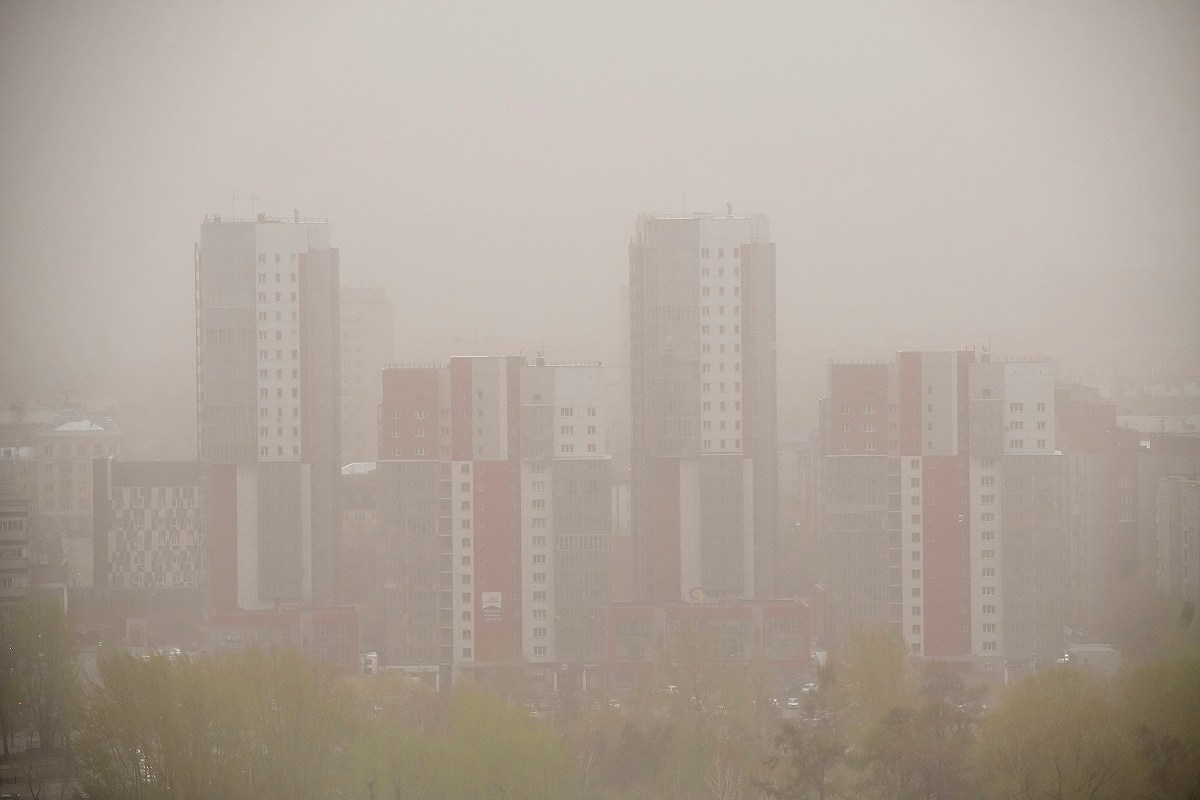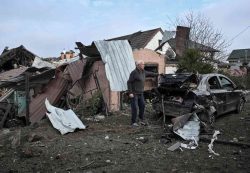
A general view shows residential buildings covered with smoke from wildfires in the Siberian city of Krasnoyarsk, Russia, May 7, 2022.
10:57 JST, June 28, 2024
June 27 (Reuters) – Wildfires above the Arctic Circle in June have unleashed carbon emissions that are the third highest for the time of year in two decades of monitoring, European scientists said on Thursday.
As climate change raises Arctic temperatures, wildfires have shifted north where they blaze through boreal forest and tundra, releasing vast amounts of greenhouse gases from carbon-rich organic soils.
The latest data from European Union’s Copernicus Atmospheric Monitoring Service (CAMS) showed some 6.8 megatonnes of carbon have been released this month, only less than in June 2019 and June 2020, which saw roughly double the emissions.
The majority of fires are burning in the Sakha Republic in Russia’s Far North. This region experienced extensive wildfires in 2021, with nearly 19 million hectares of forests destroyed. The northeastern Arctic has experienced the largest increase in extreme wildfires over the last two decades.
“Fire emissions in the Arctic have been at fairly typical levels for the last three summers but we have observed the recent fires developing following warmer and drier conditions, similar to the widespread wildfires in 2019 and 2020,” Mark Parrington, a CAMS senior scientist, said.
Wildfires tend to reach a peak in the Northern Hemisphere in July and August.
Bordering on the Arctic Ocean in the north, Sakha is prone to extreme weather. The 2021 wildfires’ smoke reached the North Pole for the first time in recorded history.
Russia state news agency TASS cited Sakha deputy minister of ecology, nature management and forestry Andrey Konoplev as saying more than 160 wildfires in the Republic had affected nearly 460,000 hectares as of June 24.
"News Services" POPULAR ARTICLE
-

American Playwright Jeremy O. Harris Arrested in Japan on Alleged Drug Smuggling
-

Japan’s Nikkei Stock Average as JGB Yields, Yen Rise on Rate-Hike Bets
-

Japan’s Nikkei Stock Average Licks Wounds after Selloff Sparked by BOJ Hike Bets (UPDATE 1)
-

Japan’s Nikkei Stock Average Buoyed by Stable Yen; SoftBank’s Slide Caps Gains (UPDATE 1)
-

Japanese Bond Yields Zoom, Stocks Slide as Rate Hike Looms
JN ACCESS RANKING
-

Tokyo Economic Security Forum to Hold Inaugural Meeting Amid Tense Global Environment
-

Keidanren Chairman Yoshinobu Tsutsui Visits Kashiwazaki-Kariwa Nuclear Power Plant; Inspects New Emergency Safety System
-

Imports of Rare Earths from China Facing Delays, May Be Caused by Deterioration of Japan-China Relations
-

University of Tokyo Professor Discusses Japanese Economic Security in Interview Ahead of Forum
-

Japan Pulls out of Vietnam Nuclear Project, Complicating Hanoi’s Power Plans

























